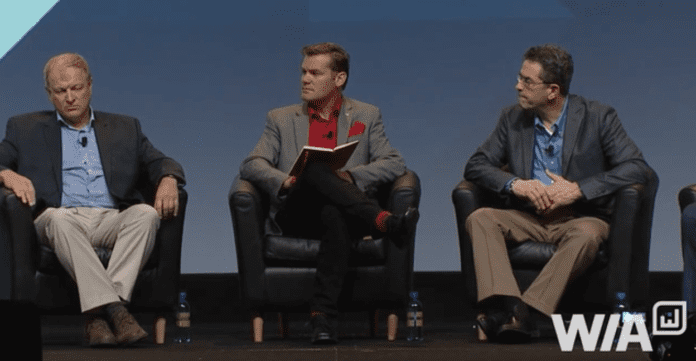Spectrum access and usage is evolving with 5G, industry leaders say, noting the importance of CBRS as proof that sharing works
Wireless and networking executives, gathered at the recent Wireless Infrastructure Show in Orlando, Fla., agreed that the spectrum needs of 5G will require innovative approaches to both technology and policy. Sharing spectrum in the 3.5 GHz band, a hot topic in telecom, will be an important test of industry cooperation, with Chris Stark, head of business development for Nokia North America, calling it the “burden of proof.”
The Federal Communications Commission has been working for several years on freeing up access to spectrum in the consumer broadband radio service (CBRS) band for shared use. That work initially focused on up to 100 megahertz of spectrum, before being increased to 150 megahertz.The 3.5 GHz band is now in the hands of the Department of Defense for use in certain radar installations, as well as by non-federal fixed satellite service earth stations for receive-only, space-to-earth operations and feeder links. Current spectrum sharing system discussions focus on a three-tiered approach.
“If there is a really good mechanism that we can implement to create shared spectrum opportunities,” Stark said, “I think that will shorten the time under which you’ll have spectrum available. I think the clearing times and so on can be really protracted when it comes to incumbent users.” CBRS holds “the burden of proof. We have to go out and make that one successful.” It’s an “opportunity to show we as an industry can actually come together and make something like CBRS happen and demonstrate that sharing is a really valuable technique going forward. Conversely, I think if we make a right dog’s breakfast of it, then I think people will be really worried about sharing.”
Kurt Schaubach, Federated Wireless CTO, said technologies are evolving to meet the availability of new spectrum. “Five, six years ago,” he said, “the 3.5 GHz band wasn’t even considered a band that would be suitable for mobility services. Now you’re seeing that both domestically and internationally. I think our definitions are going to continue to change and evolve over time. That’s a key aspect–not only just the concept of sharing, dynamic sharing, but how we can leverage these technologies to really make the best use of those bands.”
Boingo Wireless CTO Derek Peterson also emphasized the importance of CBRS. “It’s an opportunity for us to see how to innovate in shared spectrum and be able to push out opportunities and technologies that allow us to take advantage of that. There’s spectrum available if we can figure out how to share it.”
Cisco VP and GM of the Mobility Business Group Mike Iandolo said broad frequency support is fundamental to the vision of 5G, which, in addition to spectrum, will see innovation in the radio, core and overall network architecture.
“We envision a world where you have the ability to take advantage of whatever you have out there,” in terms of spectrum, he said. “There’s certainly going to be an insatiable demand for bandwidth–that’s the only constant we have in our industry. There’s a lot of exciting things happening in the core network as we virtualize it. We need to consider how each of the elements of the customer’s network are going to evolve to take advantage of that.”
Moderated by Colin Gibbs of Fierce Wireless, the panel session was titled “Pushing the spectrum boundaries: How to prepare for a 5G world.”

